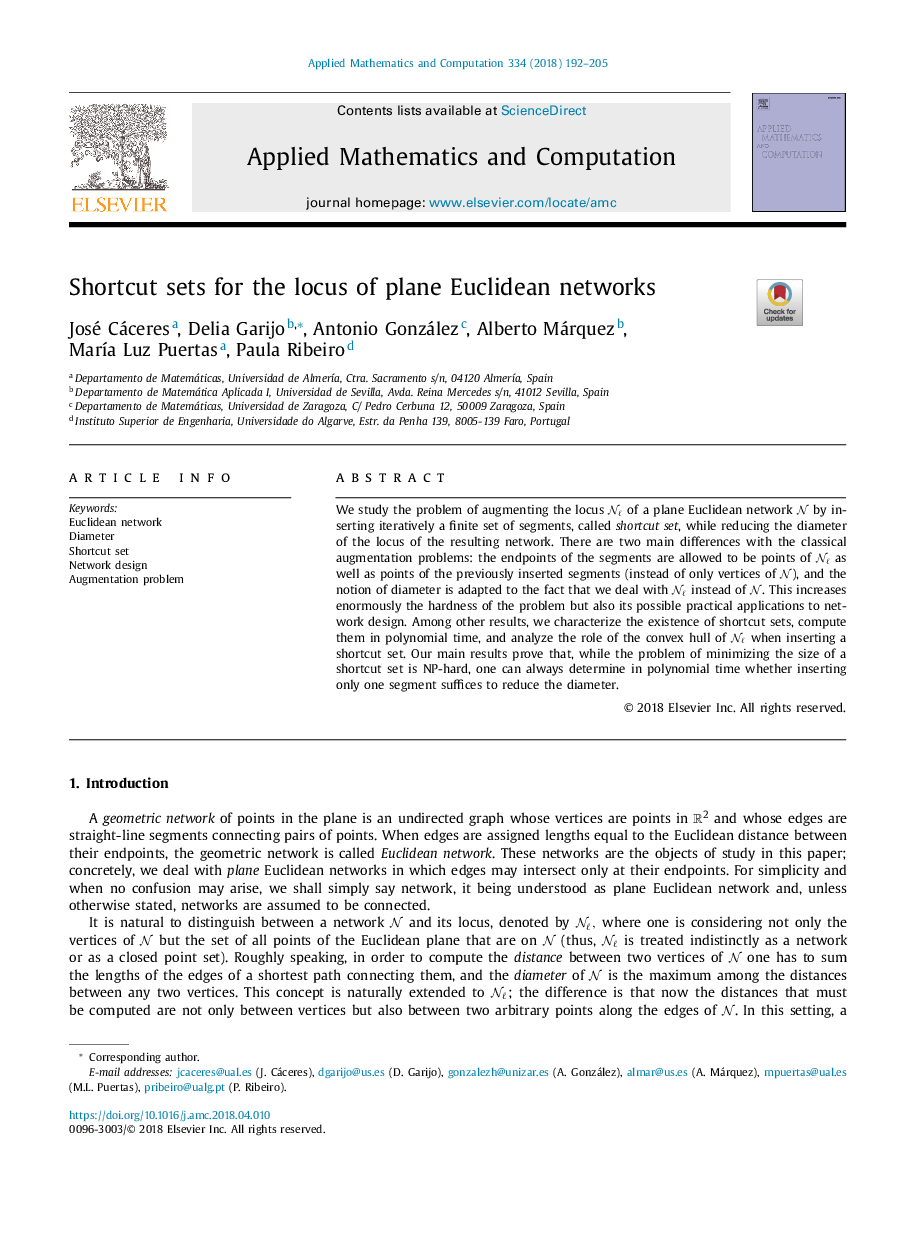| Article ID | Journal | Published Year | Pages | File Type |
|---|---|---|---|---|
| 8900830 | Applied Mathematics and Computation | 2018 | 14 Pages |
Abstract
We study the problem of augmenting the locus Nâ of a plane Euclidean network N by inserting iteratively a finite set of segments, called shortcut set, while reducing the diameter of the locus of the resulting network. There are two main differences with the classical augmentation problems: the endpoints of the segments are allowed to be points of Nâ as well as points of the previously inserted segments (instead of only vertices of N), and the notion of diameter is adapted to the fact that we deal with Nâ instead of N. This increases enormously the hardness of the problem but also its possible practical applications to network design. Among other results, we characterize the existence of shortcut sets, compute them in polynomial time, and analyze the role of the convex hull of Nâ when inserting a shortcut set. Our main results prove that, while the problem of minimizing the size of a shortcut set is NP-hard, one can always determine in polynomial time whether inserting only one segment suffices to reduce the diameter.
Keywords
Related Topics
Physical Sciences and Engineering
Mathematics
Applied Mathematics
Authors
José Cáceres, Delia Garijo, Antonio González, Alberto Márquez, MarÃa Luz Puertas, Paula Ribeiro,
